Two blocks of masses 10 kg and 20 kg are connected by a massless string and are placed on a smooth horizontal surface as shown in the figure. If a force F=600 N is applied to 10 kg block, then the tension in the string is

100N
200N
300N
400N
The correct Answer is:D
Here, m1=10kg,m=20kg,F=600N
Let T be tension of the string and a be common acceleration of the system.
a=Fm1+m2=600N10kg+20kg=60030ms−2=20ms−2

When force F is applied on 10kg block, then the tension in the string is
T2=m2a=(20kg)(20ms−2)=400N
Topper's Solved these Questions
- LAWS OF MOTIONBook:NCERT FINGERTIPSChapter:LAWS OF MOTIONExercise:Higher Order Thinking Skills
Explore 8 Videos
- LAWS OF MOTIONBook:NCERT FINGERTIPSChapter:LAWS OF MOTIONExercise:NCERT Exemplar
Explore 9 Videos
- LAWS OF MOTIONBook:NCERT FINGERTIPSChapter:LAWS OF MOTIONExercise:Circular Motion
Explore 14 Videos
- KINETIC THEORYBook:NCERT FINGERTIPSChapter:KINETIC THEORYExercise:Assertion And Reason
Explore 10 Videos
- MECHANICAL PROPERTIES OF FLUIDSBook:NCERT FINGERTIPSChapter:MECHANICAL PROPERTIES OF FLUIDSExercise:Assertion And Reason
Explore 15 Videos
Similar Questions
Two blocks of masses 10 kg and 20 kg are connected by a massless spring and are placed on a smooth horizontal surface. A force of 200 N is applied on 20 kg mass as shown in the diagram. At the instant, the acceleration of 10 kg mass is 12ms−2, the acceleration of 20 kg mass is:

View SolutionTwo blocks of masses 4kg and 2kg are placed side on a smooth horizontal surface as shown in the figure. A horizontal force of 20N is applied on 4kgblock. Find
(a) the acceleration of each block.
(b) the normal reaction between two blocks.
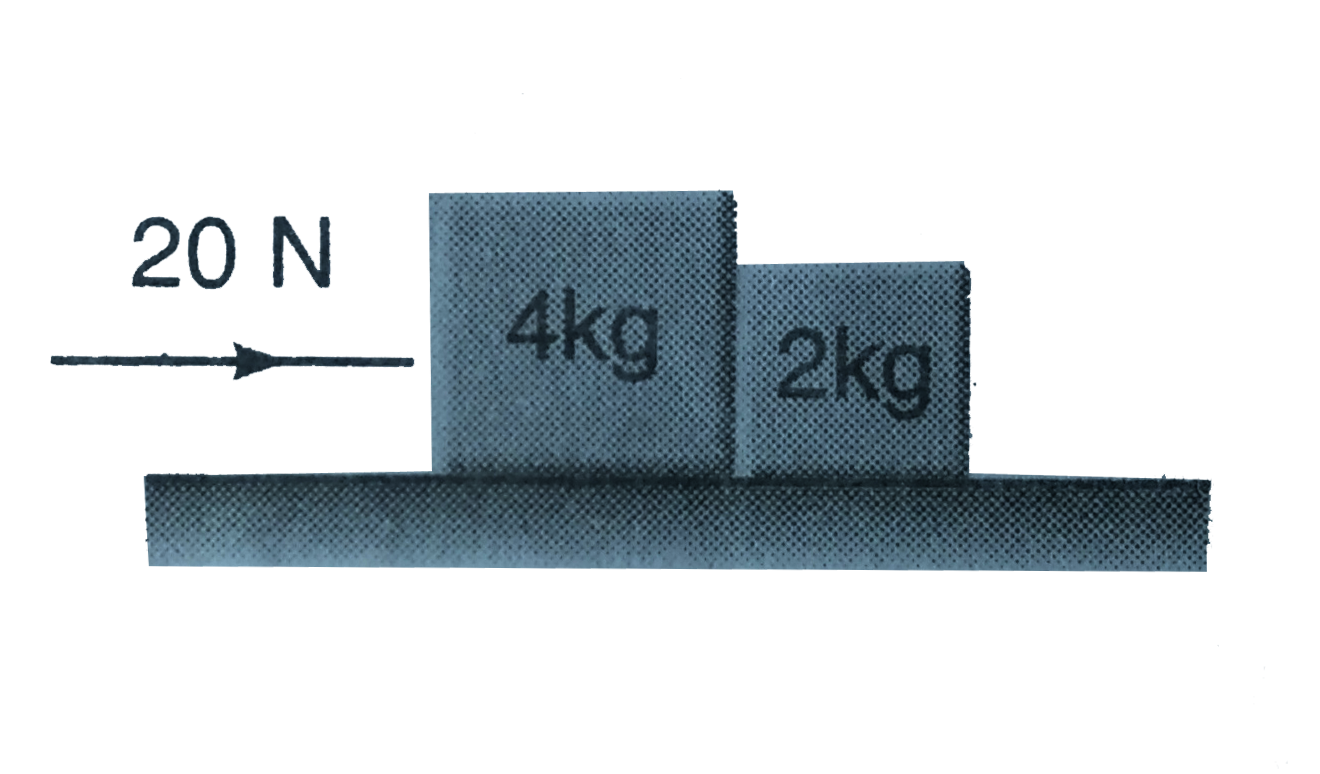
View Solution
Knowledge Check
Four blocks each of mass M connected by a massless strings are pulled by a force F on a smooth horizontal surface, as shown in figure.
 AT3=14FBT2=12FCT1=34FDT1=T2=T3=12F
AT3=14FBT2=12FCT1=34FDT1=T2=T3=12FTwo blocks of masses 4 kg and 2 kg are connected by a string. The arrangement is placed on a rough horizontal surface as shown in figure. A time varying force F = 2t. Newton is applied to 2 kg block. The variation of friction force (f2) on the 4 kg block, as a function of time, is represented by the graph :
 A
A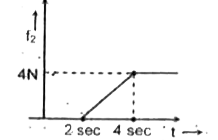 B
B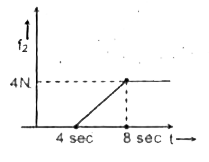 C
C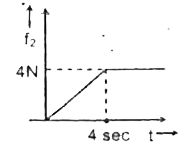 D
D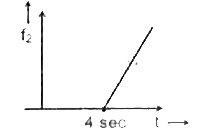
Two blocks of masses of 40 kg and 30 kg are connected by a weightless string passing over a frictionless pulley as shown in the figure.
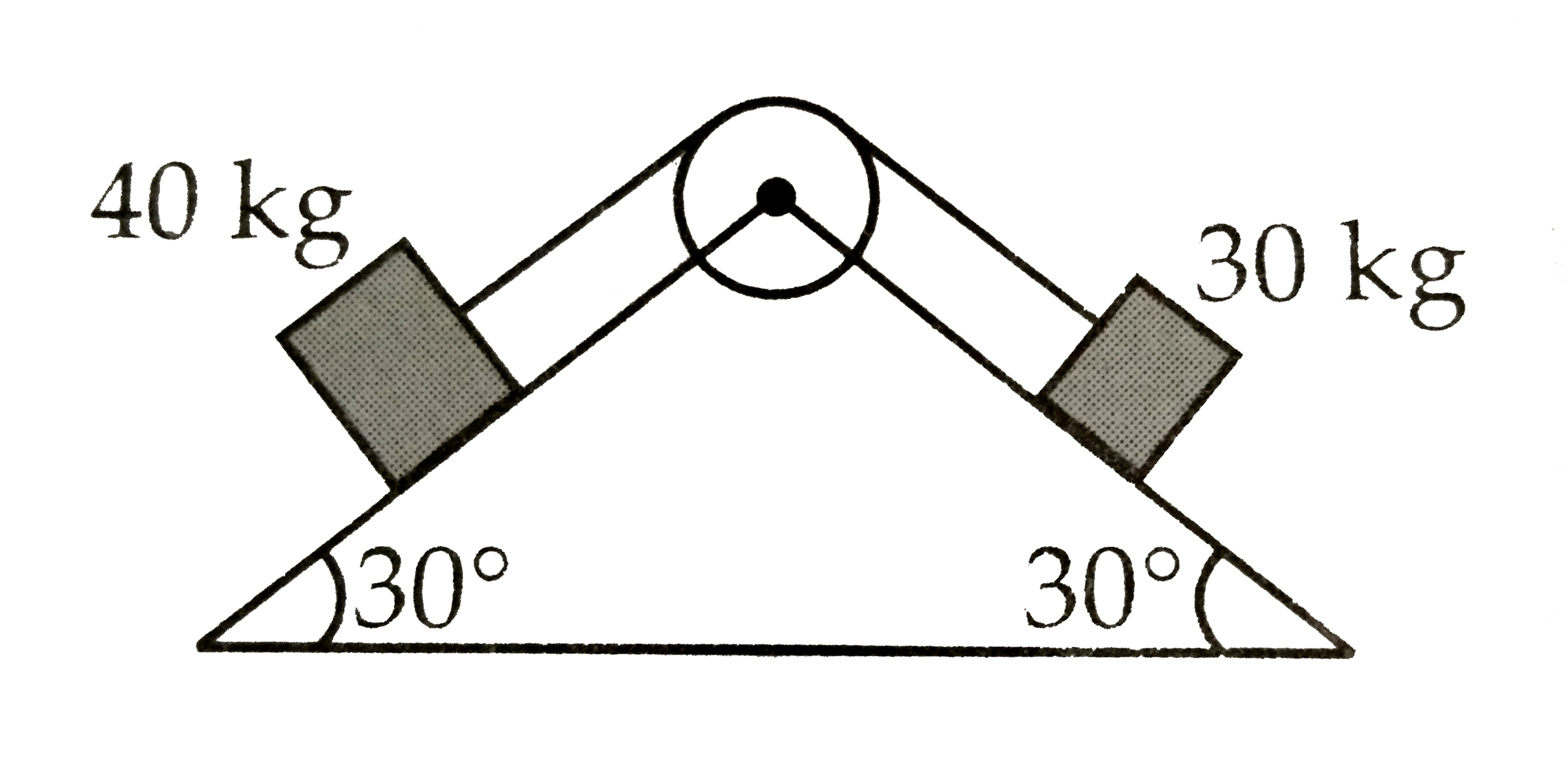 A0.7ms−2B0.8ms−2C0.6ms−2D0.5ms−2
A0.7ms−2B0.8ms−2C0.6ms−2D0.5ms−2
Two unequal masses of 1kg and 2kg are connected by an inextensible light string passing over a smooth pulley as shown in figure. A force F=20N is applied on 1kg block find the acceleration of either block (g=10m/s2).
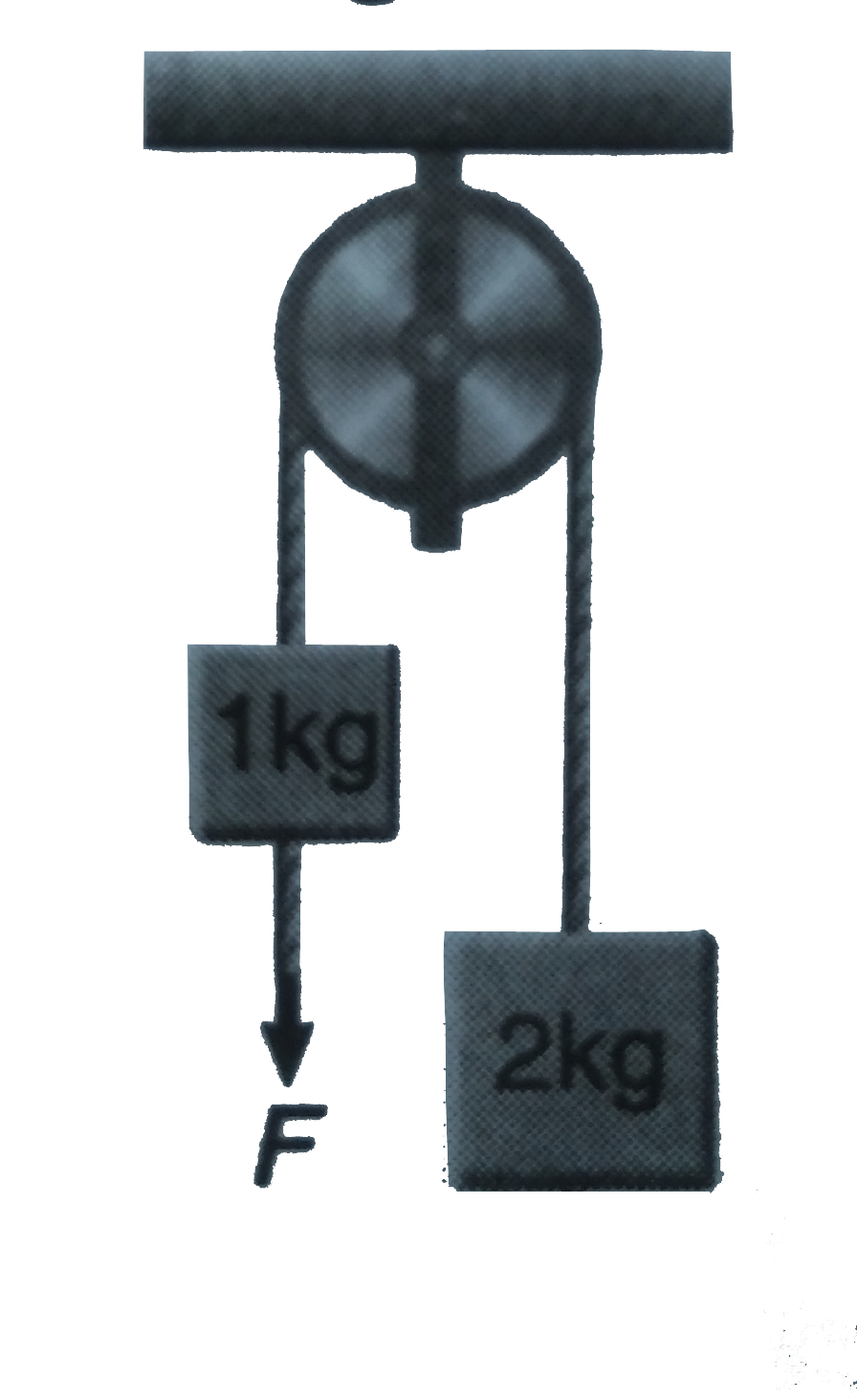
View SolutionTwo point masses connected by an ideal string are placed on a smooth horizontal surface as shown in the diagram. A sharp impulse of 10 kg m s−1 is given to the 5 kg mass at an angle of 60∘ to the line joining the masses. The velocity of the 10 kg mass just after the impulse will be
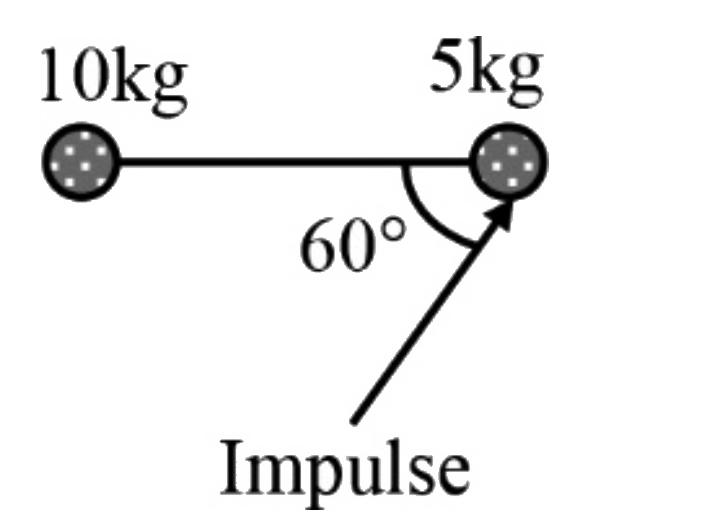
View SolutionTwo blocks of masses 1 kg and 2 kg are placed in contact on a smooth horizontal surface as shown in fig. A horizontal force of 6N is applied on a 1-kg block. Find the force of interaction of the blocks.
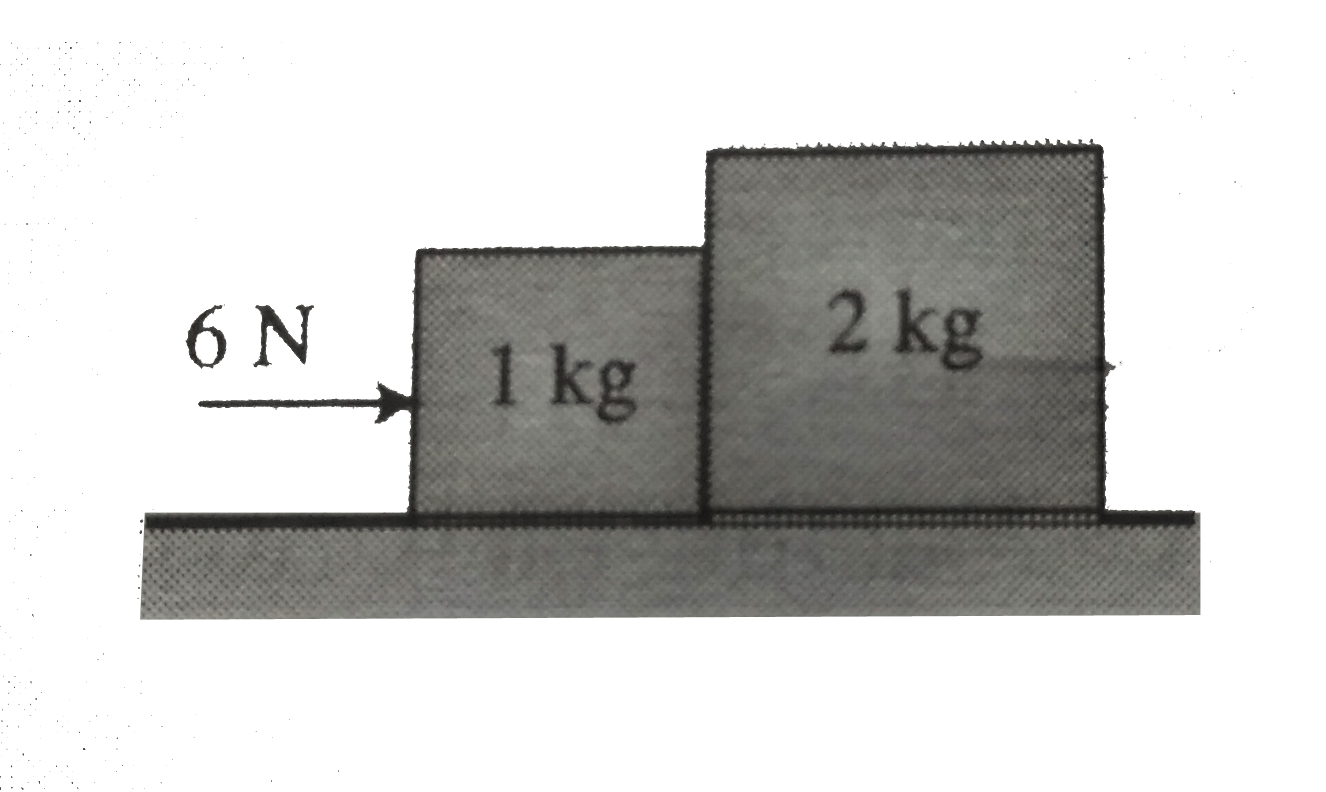
View SolutionThree blocks of masses 2 kg , 3 kg and 5 kg are connected to each other with light string and are then placed on a frictionless surface as shown in the figure. The system is pulled by a force F=10Nthen tension T1=

View SolutionTwo block of mass 1kg and 2kg are connected by a string AB of mass 1kg. The blocks are placed on a smooth horizental surfacec. Block of mass 1kg is pulled by a horizental force F of magnitude 8N. Find the tension in the string at points A and B

View Solution
